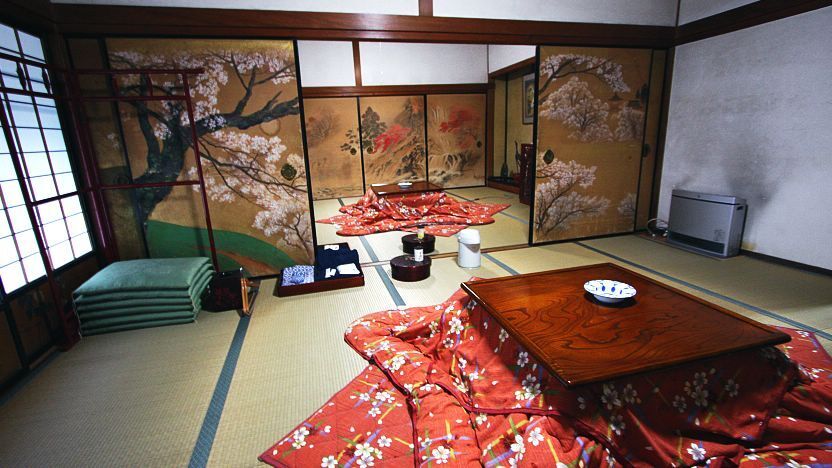Temple lodging, or “shukubo,” offers travelers a unique opportunity to experience Japan’s spiritual heritage firsthand. Staying at a temple provides a serene environment, traditional meals, and the chance to participate in Buddhist practices. We will guide you through a typical day at a temple lodging, highlight the top three temple lodges in Japan, and provide tips to enhance your temple stay experience.
A Day in a Temple Lodging

Early Morning Meditation and Prayers
A day at a temple lodging typically begins before sunrise. Guests are invited to join the monks for morning meditation and prayers. This session, known as “choka,” often starts around 5:30 AM and lasts for about an hour. The serene atmosphere and rhythmic chanting create a peaceful start to the day, allowing guests to find inner calm and reflect on their thoughts.
Traditional Vegetarian Breakfast
After the morning prayers, guests enjoy a traditional Buddhist vegetarian breakfast called “shojin ryori.” This meal consists of rice, miso soup, pickled vegetables, and seasonal dishes made from fresh, local ingredients. The food is prepared with great care, emphasizing simplicity and mindfulness.
Temple Grounds and Activities
Post-breakfast, guests have free time to explore the temple grounds. Many temples have beautiful gardens, historic buildings, and scenic walking paths. Some lodgings offer additional activities such as calligraphy, sutra copying, or tea ceremonies. These activities provide a deeper understanding of Japanese culture and Buddhist practices.
Midday Free Time or Cultural Activities
Around midday, guests may choose to participate in more cultural activities or explore nearby attractions. Some temples are located in areas rich with historical and natural sites. For instance, temples in Mount Koya (Koyasan) offer access to stunning hiking trails and ancient cemeteries.
Shojin Ryori Dinner
The evening meal, also shojin ryori, is served around 5:30 PM. Similar to breakfast, this dinner focuses on fresh, seasonal, and local ingredients. The dishes are designed to nourish the body and soul, aligning with Buddhist principles of mindfulness and respect for all living beings.
Evening Meditation and Lights Out
The day concludes with an evening meditation session, providing guests another opportunity for introspection and relaxation. After meditation, guests are encouraged to retire early. Temple lodgings often follow a strict lights-out policy around 9:00 PM to ensure a restful and rejuvenating experience.
Price
The cost of staying at a temple varies depending on the location, the temple’s amenities, and the season. On average, you can expect to pay between ¥8,000 to ¥15,000 per person per night. This price typically includes:
- Accommodation: Simple, tatami-matted rooms with futons.
- Meals: Traditional Buddhist vegetarian meals (shojin ryori), usually breakfast and dinner.
- Participation in Activities: Morning prayers and meditation sessions.
Top 3 Best Temple Lodges in Japan
1. Eko-in Temple, Koyasan

Located in the heart of Mount Koya, Eko-in Temple offers a tranquil retreat with rich historical significance. The temple provides spacious tatami rooms, hot spring baths, and a variety of cultural activities. Guests can participate in ajikan meditation, a unique form of meditative practice that focuses on breathing and visualization.
Highlights:
- Ajikan meditation sessions
- Access to Okunoin Cemetery, Japan’s largest and most sacred cemetery
- Traditional shojin ryori meals
2. Shukubo Komadori-sanso, Mount Mitake

Nestled in the scenic Mount Mitake area, Shukubo Komadori-sanso provides a perfect blend of nature and spirituality. The temple offers guided hikes to Musashi-Mitake Shrine and the picturesque Rock Garden. Guests can enjoy breathtaking views of the surrounding mountains and valleys.
Highlights:
- Guided hikes to Musashi-Mitake Shrine
- Stunning mountain views
- Seasonal vegetarian meals
3. Shigetsu-in Temple, Kyoto

Shigetsu-in Temple, located in the historic Arashiyama district of Kyoto, offers an immersive cultural experience. The temple is famous for its serene gardens and proximity to the iconic bamboo groves of Arashiyama. Guests can partake in zazen meditation and tea ceremonies.
Highlights:
- Zazen meditation sessions
- Proximity to Arashiyama bamboo groves and Tenryu-ji Temple
- Beautifully landscaped gardens
Tips for Enhancing Your Temple Stay Experience
Respect the Rules and Customs
Temples have specific rules and customs that guests should follow to maintain the sanctity of the environment. Dress modestly, avoid loud conversations, and adhere to the temple’s schedule for prayers and meals.
Embrace the Simplicity
Temple lodging emphasizes simplicity and mindfulness. Embrace the minimalist lifestyle, disconnect from technology, and take the time to reflect and meditate.
Participate in Activities
Make the most of your stay by participating in the various activities offered by the temple. Whether it’s meditation, sutra copying, or a tea ceremony, these activities provide a deeper understanding of Japanese culture and Buddhism.
Plan Your Visit
Some temple lodgings are more popular than others and may require advance reservations. Plan your visit accordingly, especially if you wish to stay during peak seasons or special events.
Conclusion
Temple lodging in Japan offers a unique and enriching experience, allowing travelers to immerse themselves in the country’s spiritual heritage. From early morning meditations to traditional vegetarian meals, a stay at a temple provides a peaceful retreat from the hustle and bustle of everyday life. By following the tips provided and choosing one of the top temple lodges, you can ensure a memorable and transformative experience. Whether you are seeking spiritual enlightenment or simply a serene getaway, temple lodging in Japan is a journey worth embarking on.


Leave a Reply